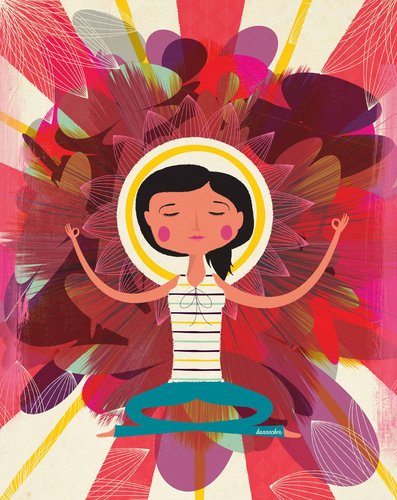
Have you read the New York Times‘ opinion article from last weekend called “Buddhists’ Delight“? It was written by James Atlas, a large figure in the publishing and editing world. Atlas was an editor at the New York Times magazine for many years and is also the author of several acclaimed books.
But that’s not all. Apparently, Atlas is also—to use the term he coins in the article—the newest “Newddhist” of the Western Buddhist world. (“Newddhist” is a term that I might like if it weren’t phonetically indistinguishable from “nudist.”) His overall point, which may be the understatement of the year, is this: Buddhism is growing in popularity in the Western world.
Yes, James Atlas. We know. But we do find it interesting that the New York Times thinks that it’s a big enough trend to cover. Not only that, but “Buddhists’ Delight” is currently #14 on the “Most-Emailed” list of articles on the Times‘ site. On Sunday and Monday, it was in the top 5.
Atlas begins the article by noting that he’s on a four-day meditation retreat in Vermont. He’s reading Sakyong Mipham, which might suggest that he was at Karme Choling, Shambhala’s meditation center in Burlington, but he doesn’t give us any more clues than that. With the amount of Buddhist centers in Vermont, he could be anywhere.
Afterward, the article ticks all the usual Newddhist boxes as Atlas tried to identify why so many people are converting to Buddhism. He gives brief mentions to secular mindfulness, meditation and neuroscience, and engaged Buddhism. In the middle he notes, perhaps surprisingly, that “Buddhism is the fourth largest religion in the United States. More Americans convert to Buddhism than to Mormonism.” These lines make it seem like the large Buddhist numbers in the U.S. are because so many people are converting. I’m sure that it’s a contributing factor. But his article makes no mention of the numerous non-convert Buddhists in the U.S., nor does he open up the discussion beyond meditation-oriented Buddhism, which is frustrating when it occurs anywhere and is especially frustrating when it occurs in the New York Times.
Then again, Atlas’ article was in the opinion section; it wasn’t presented as a well-researched article on the state of American Buddhism. I’m just not exactly sure what he was opining about. I found most of what he had to say to be boring self-indulgence, but that may be simply because it’s all old news to most American Buddhists.
Thank you for subscribing to Tricycle! As a nonprofit, we depend on readers like you to keep Buddhist teachings and practices widely available.